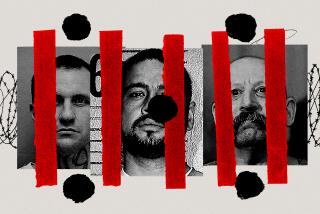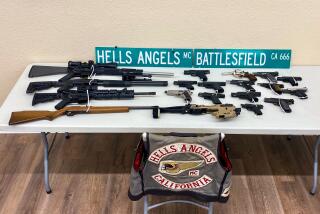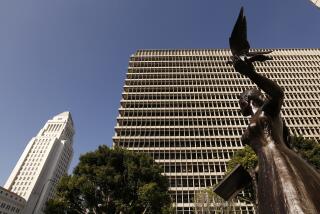Slaying Suspect Boasted of Perfect Crime, Jurors Told
- Share via
The leader of the so-called Billionaire Boys Club, a group of rich young men with dreams and schemes for getting even richer, boasted of having committed the perfect crime in killing a con man after forcing him to sign over $1.5 million, prosecutors said Monday.
But the victim, Ron Levin, 42, had the last laugh, when the check drawn on a Swiss bank account bounced, Deputy Dist. Atty. Fred Wapner said.
For the record:
12:00 a.m. March 4, 1987 For the Record Stillmans Not Involved
Los Angeles Times Wednesday March 4, 1987 Home Edition Part 1 Page 2 Column 1 Metro Desk 3 inches; 77 words Type of Material: Correction
In a Feb. 3 article about the murder trial of Joe Hunt, the leader of the Billionaire Boys Club, The Times reported Deputy Dist. Atty. Fred Wapner as saying that sons of the owners of several well-known companies were once involved in the club. An incorrect impression may have been created because one of the companies, Chemin de Fer, is owned by two men. While the son of one of the owners was involved in the club, the son of the other owner was not. Neither Spencer Stillman, nor his son, Jason, a minor, has ever belonged to or been associated with the club.
“I submit to you that Joe Hunt did not commit the perfect crime,” Wapner said in his opening statement at Hunt’s murder trial in Santa Monica Superior Court.
If convicted, the lanky, articulate and reportedly charismatic Hunt, 27, could be sentenced to death. He is also charged with a murder in San Mateo County.
Wapner outlined a murder scenario in which Hunt and his bodyguard shot Levin to get even for Levin’s having duped Hunt in an elaborate commodities trading hoax and to raise money for the foundering investment group known as BBC Consolidated, whose initials gave rise to the label “Billionaire Boys Club.”
The first trial of the bodyguard, Jim Pittman, 33, ended in a hung jury. A new trial has been scheduled.
Levin’s body allegedly was dumped in the remote Soledad Canyon area, but it has not been found.
Trusted members of the club--whose ranks once included heirs to the May Co. fortune, sons of the owners of the Irvine Co. and Chemin de Fer clothing and the son of a Times food writer--were told of the murder and warned that they would be dealt with “severely” if they told anyone, Wapner said. But several “just weren’t up for that sort of thing” and eventually went to the police.
The prosecution’s key evidence is seven yellow legal pad pages of lists found in Levin’s Beverly Hills duplex. In Hunt’s handwriting and bearing his fingerprints, the notes read like a blueprint for murder. The top sheet, headed “At Levin’s TO DO,” lists such items as “close blinds, scan for tape recorder, tape mouth, handcuff, put gloves on, explain situation, kill dog.”
A defense attorney for Hunt, however, said that the lists do not mention killing Levin and that Hunt will take the stand later to explain the meaning of the entries.
The attorney, Arthur Barens, said he will show that the disappearance of Levin, a sometime journalist and flimflam artist, in the summer of 1984 was “Levin’s ultimate con--the con of his death” and that no evidence of his demise exists.
In fact, promised Barens, two witnesses will testify that “they saw Ron Levin alive since this trial began”--driving a fancy sports car in the company of a fey young man. In addition, he said other witnesses will testify as to Hunt’s whereabouts on the night of the alleged murder.
Barens argued that Levin deliberately vanished to escape creditors, civil lawsuits and a possible jail sentence for the grand theft of about $1 million in stolen photo equipment.
As Levin’s father sat impassively in the front row of the packed courtroom, Barens said the victim was a homosexual “piranha” who tried to con everyone he met.
Describing the case as an “adventure in illusion,” not murder, Barens told the jury of 10 women and two men that it is about “tension between Ron Levin and Joe Hunt and where that tension took them.” He described both men as “eccentric, exotic, different people,” adding that Hunt was the “driving force” behind a group of “self-impressed, indolent young men . . . with a future of hollow inheritance and passive experience.”
More to Read
Sign up for Essential California
The most important California stories and recommendations in your inbox every morning.
You may occasionally receive promotional content from the Los Angeles Times.










